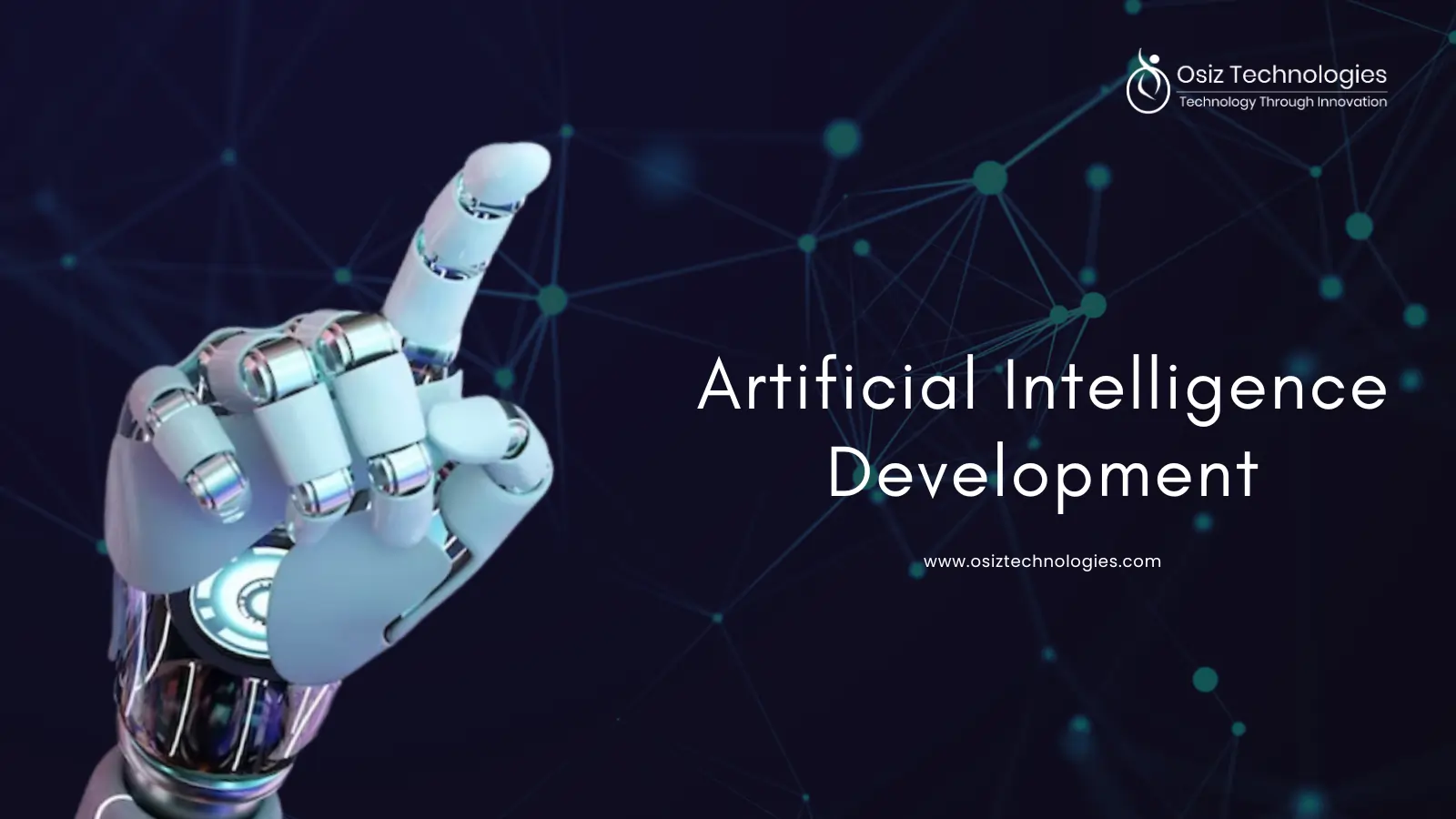Supervised Learning in AI
Machine learning is categorized into three types - supervised, unsupervised, and reinforcement. Each one addresses different problems and employs distinct methodologies. Supervised learning in AI is also known as Supervised machine learning, a subcategory of machine learning and artificial intelligence. Supervised learning helps organizations to solve real-world problems, like classifying spam in a separate folder from inbox. It is used to build accurate machine learning models. Supervised ML focuses on creating a model in the form of codes based on inputs.
Supervised Learning Work Process
Supervised learning in AI uses a set of teaching models to yield the desired output. The training dataset will include inputs and correct outputs, allowing the model to learn over time. The AI algorithm measures the accuracy through the loss function, adjusting until error has been sufficiently minimized. Supervised learning is separated into two types of problems:
Classification
Classification is a supervised machine learning algorithm used to accurately assign test data into specific categories, recognizing specific entities within the dataset and drawing some conclusions on how entities are labeled or defined. Classification algorithms are linear classifiers, support vector machines (SVM), decision trees, k-nearest neighbors, and random forest.
You can choose several classification techniques based on specific characteristics of the dataset. See how classification algorithm works.
Initial step is the build of a classification model by examining the training set. Then, the classifier predicts the labels for given data. The dataset is divided into training set and a test set, and training set comprises sampled tuples and test set consists of remaining tuples which are independent.
Test set is used to assess the predictive accuracy of the classifier, measuring the percentage of test tuples classified by the classifier. Improving accuracy is advisable to experiment with various algorithms and test different parameters within each algorithm. Cross-validation helps to determine the best algorithm to use, while selecting an algorithm for a specific problem, like accuracy, training time, linearity, and special cases for different algorithms.
Regression
It is used to understand the relationship of dependent and independent variables, also used in making projections, such as sales revenue for a given business. Linear regression, logistic regression, and polynomial regression are the popular regression algorithms.
Supervised Learning Algorithms
Linear Regression
This is a simple algorithm used for regression tasks, in finding the best linear relationship between the input features and the target variable. Linear regression is divided into independent and dependent variables. It is categorized based on the number of dependent and independent variables used in analysis. Simple linear regression is the one having one independent variable and one dependent variable, whereas multiple linear regression is the one having multiple independent variables and multiple dependent variables.
Logistic Regression
This is the widely used algorithm for binary classification tasks, which uses a logistic function for choosing the probability of a particular class. Logistic regression is used to predict whether an email is spam or not based on features like email content, sender information, etc.
Decision Trees
This algorithm builds a tree-like model of decisions and their possible consequences. Data is splitted based on features and creates decision rules for classification or regression. Decision tree algorithms use features such as customer demographics, service usage, and payment history to create rules that predict churn.
Random Forest
This is an ensemble method combining multiple decision trees to make predictions. This improves accuracy by reducing overfitting and increasing generalization. Random forest, if used in a medical scenario, predicts whether a patient has specific disease based on medical attributes.
Support Vector Machines
SVM is a powerful algorithm used in classification and regression tasks. They find an optimal hyperplane separating classes or predict continuous values in maximizing the margin of classes. SVM learns to separate two classes by finding an optimal hyperplane maximizing margin between two classes.
Naive Bayes
This is a probabilistic algorithm based on Bayes’ theorem, commonly used for text classification and spam filtering. Naive Bayes considers features like presence of certain words or phrases in the email content assuming independence.
K-Nearest Neighbors
K-NN is a learning algorithm predicting the label of an instance based on the labels of its k nearest neighbors in the features space. k-NN is used in customer characteristics of new ones in a dataset with buying preferences, finds the k most similar customers and predicts their buying preferences.
Supervised Machine Learning in Enterprises
- Customer Relationship Management - Supervised learning in AI algorithms are used in CRM to predict customer behavior and personalized marketing campaigns, helping businesses understand customer preferences.
- Fraud Detection - Supervised learning algorithms detect fraudulent activities in financial transactions, helping businesses prevent fraud and minimize financial losses.
- Credit Scoring - Supervised learning is used in banks and financial institutions for assessing the creditworthiness of individuals or businesses. Algorithms predict the likelihood of default, enabling lenders to make informed decisions on loan approvals.
- Sentiment Analysis - Supervised learning techniques are used in sentiment analysis to automatically classify and analyze sentiments in text data. This is valuable for enterprises to monitor customer feedback, allowing them to understand public perception, and make decisions.
- Image and Object Recognition - Supervised learning in AI, gained significant prominence in image and object recognition tasks, enabling applications like facial recognition, product identification, and quality control in manufacturing.
- Speech Recognition - AI algorithms enable accurate speech transcription into text. This AI technology helps applications in finding voice assistants, call center automation, transcription services, and more.
- Demand Forecasting - Retailers and supply chain management use supervised learning algorithms to predict customer demand for products or services. Businesses can optimize inventory management, production planning by analyzing historical data, and other relevant factors.
- Biometrics - Biometrics are the widely used application of supervised machine learning, involving study and utilization of unique biological characteristics like fingerprints, eye patterns, and earlobes for authentication purposes. With advanced technology, smartphones are equipped to interpret biological data, enhancing the security of systems.
Supervised Machine Learning Use Cases
Healthcare and Medicine
- Machine learning models detect diseases like cancer, tuberculosis, or cardiovascular conditions through medical images like X-rays or MRIs.
- AI algorithms analyze datasets to identify drug candidates and predict the effectiveness in treating diseases.
- Supervised learning helps in the development of personalized treatment plans on individual patients, and genetic profiles.
Finance and Banking
- Algorithms assess creditworthiness, predict default risk, and determine loan interest rates for banks.
- ML models identify fraudulent transactions, unusual patterns, and suspicious activities in real time.
- Supervised learning predicts stock market trends and trading strategies are optimized, helping financial institutions.
Retail and E-commerce
- ML models predict customer demand, allowing retailers to optimize inventory levels.
- Algorithms analyze customer preferences and purchase history to identify distinct segments, enabling targeted campaigns.
- Supervised learning enables recommendation engines for suggesting products or services to enhance customer preferences, increasing sales.
Manufacturing and Industrial Processes
- ML algorithms detect defects in manufacturing processes, ensuring quality.
- Models analyze sensor data from machinery to predict equipment failures, allowing maintenance scheduling.
- Supervised learning optimizes supply chain logistics by forecasting demand, and improving delivery routes for customer satisfaction.
Why Choose Us ?
Supervised learning excels in various domains, from image recognition and natural language processing to fraud detection and medical diagnosis. Osiz, the pioneer AI Development Company excels in Artificial Intelligence and Machine Learning with a proven experience of 15 years in industry. Our supervised learning techniques offer a powerful framework for extracting insights and making accurate predictions from data. We are poised to impact numerous industries and drive progress in the field of artificial intelligence. We train, validate, tune and deploy generative AI, and machine learning capabilities with our professionals, who excel as AI builders. Our ML development services help you achieve a tailored data-driven AI solution. With proficiency in supervised learning techniques and ML concepts, we build innovative ML solutions which perfectly aligns your business needs.
Listen To The Article
Recent Blogs

X-Mas 30%
Offer










